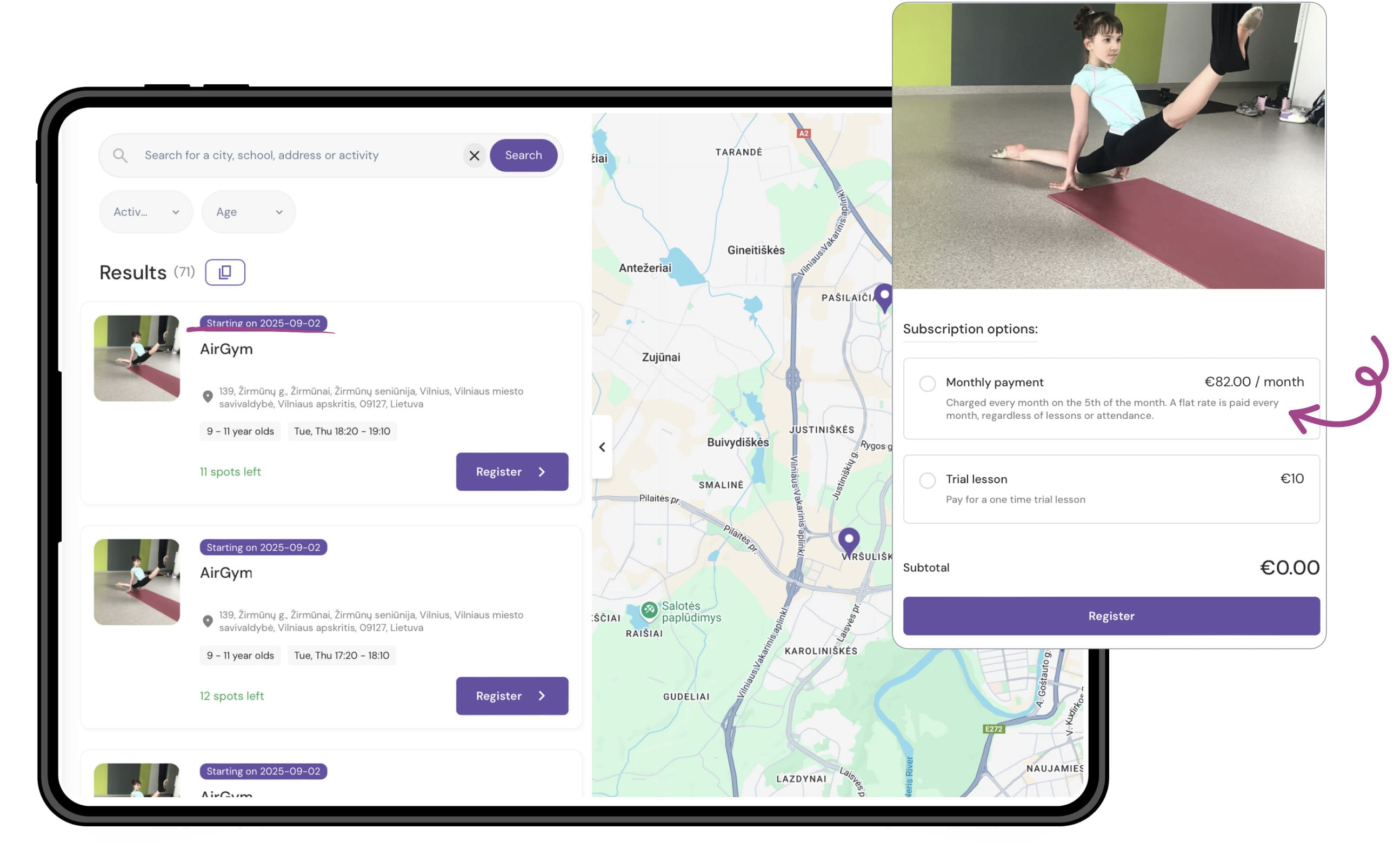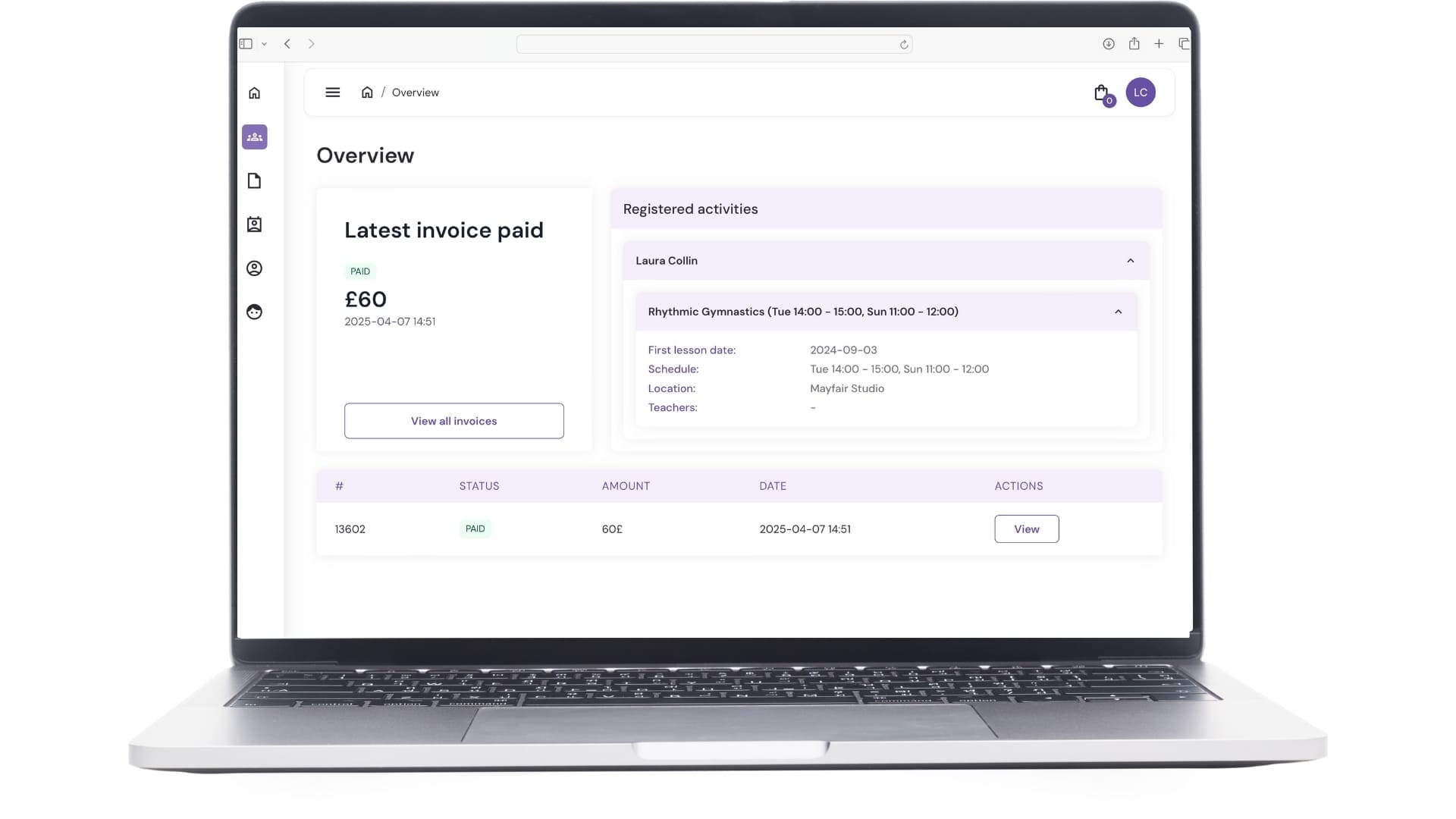
Bureliai.lt: how EXOCLASS is creating a new era of after-school club management
2026 will mark a major turning point for Lithuania’s non-formal...

Every after-school club begins the same way: with one person and one idea. A lesson plan scribbled on paper. A handful of kids in a rented hall. A flyer taped to a school fence. At the heart of it all? One founder who not only dreams big—but also teaches, greets, cleans, emails, posts to Instagram, and sends tuition reminders late at night.
This is the solo founder reality. Before the team. Before the logo. Before the studio software or the shiny enrollment portal. It starts with purpose and grit. The solo founder is the heart, the brain, and the backbone of the academy.
And while that role is heroic—it’s also exhausting.
Many educational businesses aren’t just started by solo founders—they are sustained by them. For months or even years, one person carries the full operational weight of the organization. The founder becomes a living system, performing every vital function manually:
At this stage, the founder isn’t just an educator. They are an administrator, accountant, marketer, customer support agent, IT manager, and business strategist.
This full-spectrum involvement may keep costs low in the early days—but it comes at a steep price: time, energy, and focus. Time that could be spent improving the educational experience. Energy that could be invested in program development. Focus that could be used to form meaningful partnerships or envision new offerings.
The constant switching between roles not only leads to inefficiency—it erodes the founder’s ability to think long-term. Strategic planning is sidelined in favor of urgent emails. Creative work takes a backseat to logistics. And instead of leading the organization, the founder becomes buried inside it.
Understanding this dynamic is crucial. It’s not a failure to feel overwhelmed—it’s a signal that systems, delegation, or automation are no longer optional, but essential.
For many, success looks like growth: more students, more classes, maybe even a second location. But what most solo founders quickly learn is this: growth without support becomes friction.
When the number of students doubles, so do the emails, the late payments, the scheduling conflicts. What used to be manageable becomes messy. Systems built for 10 students break down at 30. The founder’s time vanishes into task management, and what once felt like a mission now starts to feel like maintenance.
Without tools, support, or structure, every new student begins to feel like a new problem—not a new possibility. Even celebrating success becomes difficult, because every achievement adds to the workload.

And with no time to think strategically, founders find themselves stuck inside the business instead of leading it. The energy that once went into innovation and growth is now consumed by trying to stay afloat.
That’s the pivot point. Some scale with chaos. Others pause. The best take action: they invest in structure.
Strategic growth means offloading low-value tasks so the founder can focus on high-value direction. It means using smart tools like studio software and automated tuition payment systems not to replace people—but to protect energy, improve consistency, and build a real foundation. It’s not just about managing more—it’s about managing better.
Monika Kvietkutė-Greimienė, founder of Baby & Kids Gymnastics School, started just like many others: one person running every aspect of a growing school. She taught the classes, registered the students, followed up on tuition payments, and handled every parent question herself.
Her program thrived. In fact, she doubled her student count to 200 children—and then doubled again. But manual tools and scattered processes were no longer enough. Admin time ballooned. Parent experience started to suffer. Expansion felt impossible.
That’s when she joined Exoclass. With a single system, Monika simplified online student registration, automated tuition payments, and centralized all student management tasks. What used to take 15 hours a week now takes three.

More importantly, the change gave her back something priceless: mental space. With studio software handling the operations, she now invests her time into what matters—curriculum design, parent communication, and a high-quality experience across all classes.
Monika didn’t grow by working harder. She grew by working smarter. Read full story here.
Doing everything yourself isn’t a badge of honor—it’s a phase. A powerful phase, but one that must evolve.
Smart founders recognize this early. They begin shifting their role from doer to leader. They create systems, introduce studio software, automate tuition payments, and reduce repetitive admin through centralized student management.
They invest not because they’re overwhelmed—but because they’re ambitious.
Just like you can’t teach 100 students alone, you can’t build a sustainable after-school club by managing everything in your head or across 10 different tools. Strategic structure is what transforms a founder-led classroom into a scalable organization.
This is where Exoclass steps in. Designed specifically for educational entrepreneurs, Exoclass is more than just software — it’s an operational co-pilot for solo founders ready to scale. It brings together everything you need to manage your after-school club with ease:

With Exoclass, solo founders no longer have to compromise between teaching and running their business. You can finally delegate the busywork to a system built for your reality — and redirect your focus toward growth, quality, and creative leadership.
If you’ve built your academy with passion, persistence, and one pair of hands—you’re already ahead of most. But to grow further, to preserve your energy, and to lead with clarity, you need support that works behind the scenes.
That’s where Exoclass comes in. Our all-in-one after-school club platform simplifies online student registration, tuition payments, and student management—so you can stop reacting and start leading.
Book a free demo today and discover how to scale your vision with strategy, not stress.
